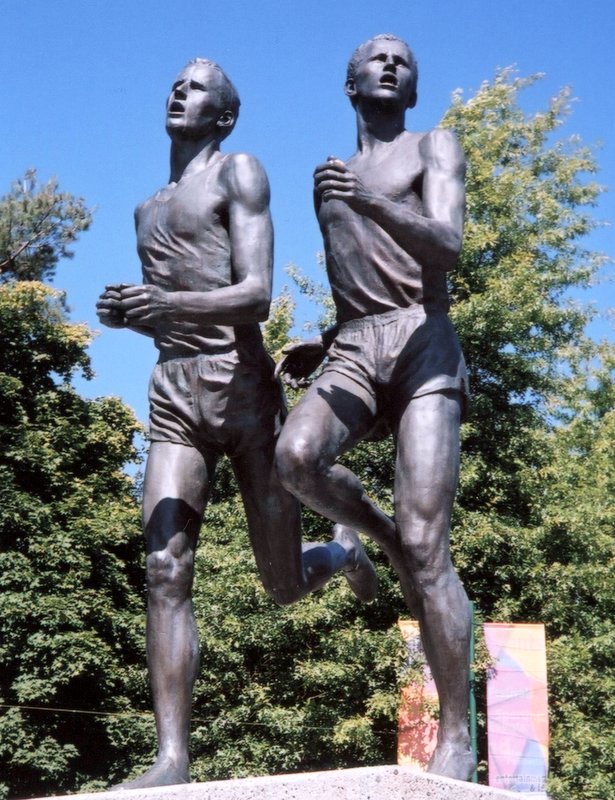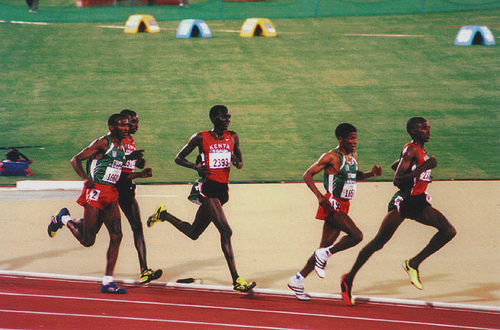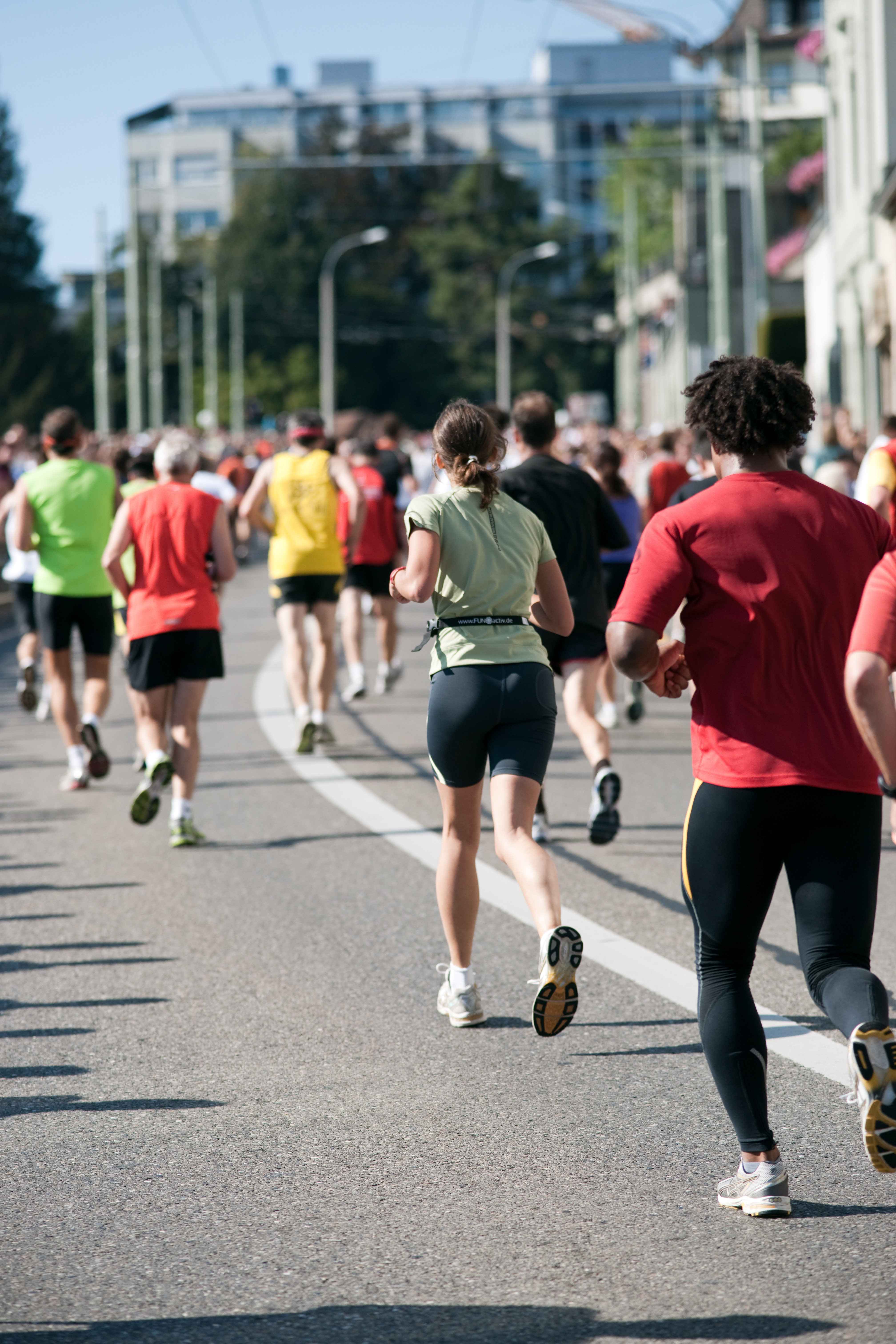|
Gelete Burka
Gelete Burka Bati (sometimes misspelled ''Burika'', Oromo: Galate Burqaa Baati, Amharic: ገለቴ ቡርቃ; born 23 January 1986) is an Ethiopian middle-distance and long-distance runner. She was born in Kofele in the Arsi Zone of the Oromia Region, the same district as double Olympic champion Haile Gebrselassie. Gelete was the short course champion at the 2006 IAAF World Cross Country Championships. She is a three-time medalist at the IAAF World Indoor Championships, her best performance being a gold medal win in the 1500 m in 2008. She is a four-time participant at the World Championships in Athletics (2005 to 2011) and represented Ethiopia at the Olympics in both 2008 and 2012. She has also medalled on the regional stage, having been the runner-up at the 2010 African Championships in Athletics and the gold medallist at the 2007 All-Africa Games. She was the African record holder for the mile run and the indoor 1500 m. Career Burka's first significant achieveme ... [...More Info...] [...Related Items...] OR: [Wikipedia] [Google] [Baidu] |
Athletics (sport)
Athletics is a group of sporting events that involves competitive running, jumping, throwing, and walking. The most common types of athletics competitions are track and field, road running, cross country running, and racewalking. The results of racing events are decided by finishing position (or time, where measured), while the jumps and throws are won by the athlete that achieves the highest or furthest measurement from a series of attempts. The simplicity of the competitions, and the lack of a need for expensive equipment, makes athletics one of the most common types of sports in the world. Athletics is mostly an individual sport, with the exception of relay races and competitions which combine athletes' performances for a team score, such as cross country. Organized athletics are traced back to the Ancient Olympic Games from 776 BC. The rules and format of the modern events in athletics were defined in Western Europe and North America in the 19th and early 20th century, an ... [...More Info...] [...Related Items...] OR: [Wikipedia] [Google] [Baidu] |
2008 African Championships In Athletics
The 16th African Championships in Athletics was held in Addis Ababa, the capital city of Ethiopia, from April 30 to May 4, 2008. The competition venue was the Addis Ababa Stadium. It is the largest Athletics event held in Ethiopia to date. It was the first time in its then 29-year history the African Championships in Athletics were held in Eastern Africa, despite the region's well-documented success in long-distance running. In the men's 100 m, Nigerians Olusoji Fasuba and Uchenna Emedolu repeated the places from the 2006 edition. On April 30, there was a 35-minute delay to the men's 10,000 metres due to weather, but the Ethiopians dominated the podium and the race, with the missed absence of world champion Kenenisa Bekele. Men's results Track Field Women's results Track Field Medals table Participating nations * (11) * (3) * (14) * (10) * (7) * (22) * (1) * (1) * (10) * (1) * (10) * (9) * (6) * (18) * (86) * (1) * (5) * (22) * (9) * (39) * (3) * (4) * (1) * ... [...More Info...] [...Related Items...] OR: [Wikipedia] [Google] [Baidu] |
Bronze Medal
A bronze medal in sports and other similar areas involving competition is a medal made of bronze awarded to the third-place finisher of contests or competitions such as the Olympic Games, Commonwealth Games, etc. The outright winner receives a gold medal and the second place a silver medal. More generally, bronze is traditionally the most common metal used for all types of high-quality medals, including artistic ones. The practice of awarding bronze third place medals began at the 1904 Olympic Games in St. Louis, Missouri, before which only first and second places were awarded. Olympic Games Minting Olympic medals is the responsibility of the host city. From 1928– 1968 the design was always the same: the obverse showed a generic design by Florentine artist Giuseppe Cassioli with text giving the host city; the reverse showed another generic design of an Olympic champion. From 1972– 2000, Cassioli's design (or a slight reworking) remained on the obverse with a cu ... [...More Info...] [...Related Items...] OR: [Wikipedia] [Google] [Baidu] |
2003 IAAF World Cross Country Championships
The 2003 IAAF World Cross Country Championships took place on March 29/30, 2003. The races were held at the L'Institut Équestre National in Avenches near Lausanne, Switzerland. Reports of the event were given in ''The New York Times'', in the Herald, and for the IAAF. Complete results for senior men, for senior men's teams, for men's short race, for men's short race teams, for junior men, for junior men's teams, senior women, for senior women's teams, for women's short race, for women's short race teams, for junior women, for junior women's teams, medallists, and the results of British athletes who took part were published. Doping There were several doping positives at the championships. Positives at the 2003 IAAF World Cross Country Championships * Pamela Chepchumba – 2-year ban (EPO) * Alberto García Fernandez – 2-year ban (EPO) * Soumiya Labani – 2-year ban * Asmae Leghzaoui – 2-year ... [...More Info...] [...Related Items...] OR: [Wikipedia] [Google] [Baidu] |
Mile Run
The mile run (1,760 yards or exactly 1,609.344 metres) is a middle-distance foot race. The history of the mile run event began in England, where it was used as a distance for gambling races. It survived track and field's switch to metric distances in the 1900s and retained its popularity, with the chase for the four-minute mile in the 1950s a high point for the race. In spite of the roughly equivalent 1500 metres race, which is used instead of the mile at the World Championships and Olympic Games and is sometimes referred as the foremost middle-distance track event in athletics, the mile run is present in all fields of athletics, and since 1976, it is the only imperial distance for which World Athletics has on its books for official world records. Although the mile is not featured at any major championships, the Wanamaker Mile, Dream Mile, Emsley Carr Mile and Bowerman Mile races are among the foremost annual middle-distance races outdoors, respectively. ... [...More Info...] [...Related Items...] OR: [Wikipedia] [Google] [Baidu] |
List Of African Records In Athletics
African records in athletics are the best marks set in a track and field and road running events by an athlete who competes for a member nation of the Confederation of African Athletics (CAA). The organisation is responsible for ratification and it analyses each record before approving it. Records may be set in any continent and at any competition, providing that the correct measures are in place (such as wind-gauges) to allow for a verifiable and legal mark. Outdoor Key to tables: + = en route ''En route'' may refer to: * ''En Route'' (novel), an 1895 novel by Joris-Karl Huysmans * ''En Route'' (film), a 2004 German movie directed by Jan Krüger * En-route chart, in aeronautics * enRoute (credit card), Air Canada's credit card divisi ... to a longer distance h = hand timing A = affected by altitude Mx = mixed race Wo = woman only race NWI = no wind measurement # = not ratified by federation a = aided road course according to IAAF rule 260.28 X = annulled due to dop ... [...More Info...] [...Related Items...] OR: [Wikipedia] [Google] [Baidu] |
2007 All-Africa Games
The 9th All-Africa Games took place between 11 and 23 July 2007 in Algiers, the capital city of Algeria. Algiers is the first city to hold All-Africa Games for a second time. The 1978 All-Africa Games were held there. Besides Algeria, only Nigeria has hosted the event twice, but with different host cities. 4793 athletes took part to these games. Venues *Main stadium - Athletics *Stade SATO - Para athletics *Piscine du Complexe Olympique - Swimming *Hall OMS El Biar - Badminton *Salle OMS Hydra - Women's Basketball *Salle Staouali - Men's Basketball *Salle Harcha - Men's Basketball *Centre Equestre LIDO - Equestrian *Centre Equestre de Maramene - Equestrian (Endurance) *Stand de tir Chenoua - Shooting *Salle OMS de Bordj-El-Kiffan - Boxing *Coupole - Judo, Karate, Handball *Salle OMS de Bousmail - Weightlifting *Club Tennis OCO - Tennis *Salle OMS Boumerdes - Kickboxing, Taekwondo *Barrage de Boukerdane - Rowing *Salle OMS de Rouiba - Table tennis *Salle De Bab Ezzouar - Gymnast ... [...More Info...] [...Related Items...] OR: [Wikipedia] [Google] [Baidu] |
2006 IAAF World Cross Country Championships
The 2006 IAAF World Cross Country Championships took place on April 1/2, 2006. The races were held at the Umi-no-nakamichi Seaside Park in Fukuoka, Japan, Japan's National Cross Country Course which is the permanent residence of the annual Fukuoka International Cross Country meeting. The event was once again dominated by Ethiopian and Kenyan runners and also Eritrean runners. Kenenisa Bekele won both men's individual races, proving himself the most successful Cross country runner. Reports of the event were given in ''The New York Times'', and for the IAAF. Complete results for senior men, for senior men's teams, for men's short race, for men's short race teams, for junior men, for junior men's teams, senior women, for senior women's teams, for women's short race, for women's short race teams, for junior women, for junior women's teams, medallists, and the results of British athletes who took part were published. Medalli ... [...More Info...] [...Related Items...] OR: [Wikipedia] [Google] [Baidu] |
Haile Gebrselassie
Haile Gebrselassie ( am, ኀይሌ ገብረ ሥላሴ, ''haylē gebre silassē''; born 18 April 1973) is an Ethiopian retired long-distance track, road running athlete, and businessman. He won two Olympic gold medals and four World Championship titles over the 10,000 metres. He triumphed in the Berlin Marathon four times consecutively and also had three straight wins at the Dubai Marathon. Further to this, he earned four world titles indoors and was the 2001 World Half Marathon Champion. Haile had major competition wins at distances between 1500 metres and the marathon, moving from outdoor, indoor and cross country running to road running in the latter part of his career. He broke 61 Ethiopian national records ranging from 800 metres to the marathon, set 27 world records, and is regarded as one of the greatest distance runners in history. In September 2008, at the age of 35, he won the Berlin Marathon with a world record time of 2:03:59, breaking his own world record by ... [...More Info...] [...Related Items...] OR: [Wikipedia] [Google] [Baidu] |
Arsi Zone
Arsi ( om, Godina Arsii) is a zone in Oromia Region of Ethiopia, named after a clan of the Oromo, who inhabit in the area. Arsi is bordered on the south by Bale Zone, on the southwest by the West Arsi Zone, on the northwest by East Shewa Zone, on the north by the Afar Region and on the east by West Hararghe Zone. It covers an area of 19,825.22 km2, divided into 25 districts (''weredas''). The population was officially estimated at 3,894,248 in mid 2022. The highest point in Arsi Zone is Mount Chilalo; other notable mountains in this zone include Mount Kaka and Mount Gugu. Arsi Mountains National Park was created in 2011 to protect a section of the mountains. The administrative centre of this zone is in Asela, with an estimated 139,537 inhabitants in mid 2022; other towns in this zone (with estimated populations in mid 2022) include Bokoji (36,805) in Limuna Bilbilo District, Robe (31,445) in Robe District, Etaya (31,094) in Hitosa District, Dera (30,676) in Dodota District, Ab ... [...More Info...] [...Related Items...] OR: [Wikipedia] [Google] [Baidu] |
Long-distance Runner
Long-distance running, or endurance running, is a form of continuous running over distances of at least . Physiologically, it is largely Aerobic exercise, aerobic in nature and requires endurance, stamina as well as mental strength. Within endurance running comes two different types of respiration. The more prominent side that runners experience more frequently is aerobic respiration. This occurs when oxygen is present, and the body is able to utilize oxygen to help generate energy and muscle activity. On the other side, anaerobic respiration occurs when the body is deprived of oxygen, and this is common towards the final stretch of races when there is a drive to speed up to a greater intensity. Overall, both types of respiration are used by endurance runners quite often, but are very different from each other. Among mammals, humans are well adapted for running significant distances, and particularly so among primates. The capacity for endurance running is also found in a ... [...More Info...] [...Related Items...] OR: [Wikipedia] [Google] [Baidu] |
Middle-distance Running
Middle-distance running events are Track and field#Running, track races longer than Sprint (running), sprints, up to 3000 metres. The standard middle distances are the 800 metres, 1500 metres and mile run, although the 3000 metres may also be classified as a middle-distance event. The 1500 m came about as a result of running laps of a 400 m outdoor track or laps of a 200 m indoor track, which were commonplace in continental Europe in the 20th century.1500 m – Introduction IAAF. Retrieved on 5 April 2010. Events 500 metres A very uncommon middle-distance event that is sometimes run by sprinters for muscle stamina training.600 yards This was a popular distance, particularly indoors, when Imperial units, imperial distances were common. In ...[...More Info...] [...Related Items...] OR: [Wikipedia] [Google] [Baidu] |



